100 Greatest Video Game Franchises
100 Greatest...
A Rowman & Littlefield Book Series
Series Editor: Bob Batchelor
R&L Editor: Stephen Ryan
100 Greatest Video Game Characters , edited by Jaime Banks, Robert Mejia, and Aubrie Adams
100 Greatest Video Game Franchises , edited by Robert Mejia, Jaime Banks, and Aubrie Adams
100 Greatest Video Game Franchises
Edited by
Robert Mejia
Jaime Banks
Aubrie Adams
ROWMAN & LITTLEFIELD
Lanham Boulder New York London
Published by Rowman & Littlefield
A wholly owned subsidiary of The Rowman & Littlefield Publishing Group, Inc.
4501 Forbes Boulevard, Suite 200, Lanham, Maryland 20706
www.rowman.com
Unit A, Whitacre Mews, 26-34 Stannary Street, London SE11 4AB
Copyright 2017 by Rowman & Littlefield
All rights reserved . No part of this book may be reproduced in any form or by any electronic or mechanical means, including information storage and retrieval systems, without written permission from the publisher, except by a reviewer who may quote passages in a review.
British Library Cataloguing in Publication Information Available
Library of Congress Cataloging-in-Publication Data
Names: Mejia, Robert, 1982 editor. | Banks, Jaime, 1980 editor. | Adams, Aubrie, 1983 editor.
Title: 100 greatest video game franchises / edited by Robert Mejia, Jaime Banks, Aubrie Adams.
Other titles: One hundred greatest video game franchises
Description: Lanham, Maryland : Rowman & Littlefield, 2017. | Series: 100 greatest... | Includes bibliographical references and index.
Identifiers: LCCN 2017001814 (print) | LCCN 2017020509 (ebook) | ISBN 9781442278158 (electronic) | ISBN 9781442278141 (hardback : alk. paper)
Subjects: LCSH: Video gamesHistory. | Video games industryHistory.
Classification: LCC GV1469.3 (ebook) | LCC GV1469.3 .A15 2017 (print) | DDC 794.809dc23
LC record available at https://lccn.loc.gov/2017001814
 The paper used in this publication meets the minimum requirements of American National Standard for Information SciencesPermanence of Paper for Printed Library Materials, ANSI/NISO Z39.48-1992.
The paper used in this publication meets the minimum requirements of American National Standard for Information SciencesPermanence of Paper for Printed Library Materials, ANSI/NISO Z39.48-1992.
Printed in the United States of America
Acknowledgments
This book is the result of the collective effort of numerous individuals. Family, friends, colleagues, and contributors were incredibly generous with their time and support, and we thank them for their belief in us, each other, and this project. This book is better because of them, and we are fortunate to have these individuals and communities as a part of our lives.
Though space prevents us from acknowledging every individualas much as we wish otherwisewe would like to specifically thank the following individuals: Jennifer Mejia, Basil Mejia, Nick Bowman, and John Nelson for their ongoing love and support; Laura Otterness for being an excellent research assistant and helping with text and citation formatting; Kelsey Earle for assisting with the index; and Bob Batchelor, Andrea O. Kendrick, Jessica McCleary, and Stephen Ryan of Rowman & Littlefield for providing fantastic editorial support.
And last but not least, we would like to thank our contributors. We had the pleasure of collaborating with a fantastic group of individuals from across the globe. We are humbled by the care and attention you gave these short pieces, and by your humoring us with our feedback. You made editing this collection a pleasure. Thank you.
Introduction
Video games are old media. Before the video game industry became a popular culture phenomenon, proudly touting its success vis--vis other entertainment industries in the late 2000s, the industry of the late 1990s was aware that it was perceived primarily as the province of sexually frustrated, failed men. Before Mortal Kombat (1995) was lauded by famed movie critic Gene Siskel as the only halfway decent video game turned into a movie, his counterpart Roger Ebert had called The Wizard (1989) an unethical, thinly disguised commercial for Nintendo video games. Before the Nintendo Entertainment System was noted as the hottest American toy of 1998, Ataris Pong (1972) was at the forefront of an industry that by 1974 was generating an estimated $900 million annuallyor $2.6 billion when accounting for inflation. Though not as established as film, radio, television, or print media, the industry, in part because of its relatively recent, rapid ascension, was often seen as new media, though it emerged before VHS, audio cassettes, and the widespread adoption of color television with games like Mouse in the Maze (1959) and Spacewar! (1962), not to mention conceptual precursors like Bertie the Brain (1950) and Tennis for Two (1958). Throughout that time, video games played a significant role in the development of our cultural landscapeand this book argues that this role is worth remembering.
Like other cultural products, video games reflect, intersect, and influence the history of which they are a part: the first video game console (the Brown Box, which later became the Magnavox Odyssey) was classified as a top-secret military training device until 1968; the success of Super Mario Bros. (1985), which by the late 1980s had become more popular than Mickey [Mouse], was once seen by some as a travesty that signaled the next phase of the Japanese invasion; SimCity 2000 (1994) was once regularly used [in civics classes and urban planning seminars] to give budding policy wonks a preview of their chosen career; and currently, games like Minecraft (2011) are being used to teach kids (and adults) how to program. Even major political figures have taken notice, with U.S. president Ronald Reagan once praising Space Invaders (1978) for helping young people [develop the] incredible hand, eye, and brain coordination necessary for tomorrows fighter pilots, and Japanese prime minister Shinzo Abe appearing dressed as Mario during the closing ceremonies of the 2016 Rio Olympics. Video games have long been a part of the cultural conversation.
Due to the industrys entanglement in a range of political, economic, educational, and social concerns and interests, it is perhaps unsurprising that video games have served as a touchstone for larger cultural struggles. Indeed, considering the zeal that surrounds these debates, games scholar Dmitri Williams suggests that the term lightning rod might serve as a better metaphor for the industrys ability to attract cultural criticism and praise. Though some of this criticism and praise may be unwarranted and may serve as a red herring, distracting our attention from other socioeconomic factors, the industry has actively tempted and courted the notion that video games play a significant role in society. With names like Rushn Attack (1985), Desert Strike (1996), Big Brain Academy (2006), and Art Academy (2009), not to mention more incendiary titles like Mortal Kombat (1992), Manhunt (2003), and Bully (2006), it is clear that the industry has often sought to capitalize on the latest cultural trends and its perceived outsider statuswhether as deviant rebel or external savior.
This collection of essays includes all of these different types of engagementsfrom topics such as international espionage ( Splinter Cell , 2002), health ( Family Trainer , 1986), school violence ( Super Columbine Massacre RPG! 2005), and education ( The Oregon Trail , 1971). The significance of video games, nonetheless, is not just about its entanglement with these perhaps more salient cultural concerns but also about how the medium has transformed our understanding of play and entertainment. To this end, this collection of essays also addresses such topics as simulation ( Sid Meiers Civilization , 1991), interactive fiction ( The Hobbit , 1982), genre development ( Kings Quest , 1980), and eSports ( League of Legends , 2009). Though differing in their emphasisexternal sociocultural contexts versus internal game mechanicswe see these two interests as complementing each other, for whether game design is interpreted as a narrative architecture for engaging external sociocultural contexts or as a magic circle where players are able to escape from the confines of the external world, all play means something. Exploring this meaning is what this collection is about.
Next page
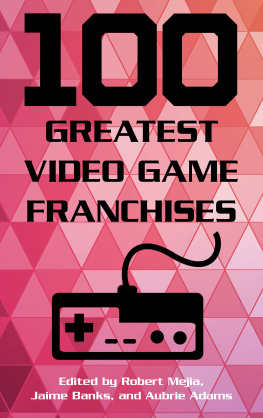
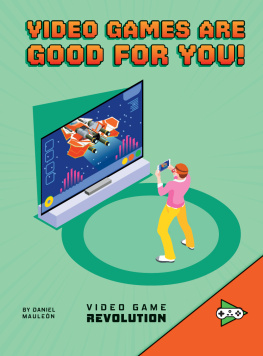


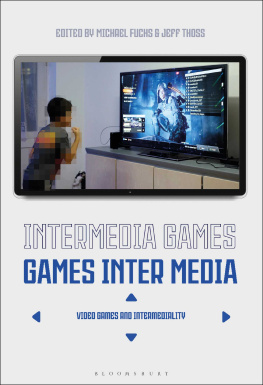

![Mark J. P. Wolf (editor) - Encyclopedia of Video Games: The Culture, Technology, and Art of Gaming [3 volumes]](/uploads/posts/book/279290/thumbs/mark-j-p-wolf-editor-encyclopedia-of-video.jpg)
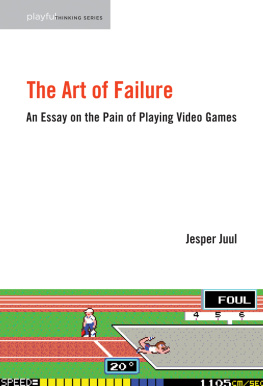

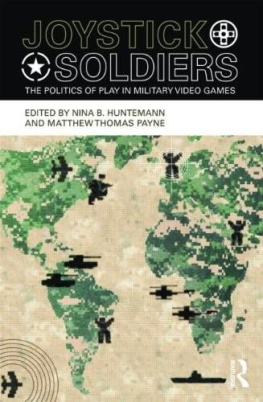


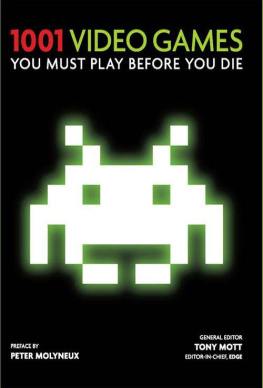
 The paper used in this publication meets the minimum requirements of American National Standard for Information SciencesPermanence of Paper for Printed Library Materials, ANSI/NISO Z39.48-1992.
The paper used in this publication meets the minimum requirements of American National Standard for Information SciencesPermanence of Paper for Printed Library Materials, ANSI/NISO Z39.48-1992.